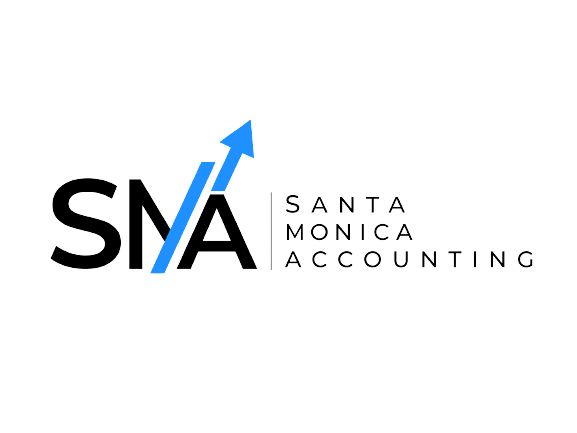Accounting is frequently referred to as the “language of business” since it offers crucial information about the operation and financial health of businesses. Nonetheless, there are a number of distinct types in the field of accounting, each with its own audiences and uses.
We’ll examine the several types of accounting in this thorough guide, pointing out the differences and similarities.
What is Financial Accounting?
This type of accounting focuses on providing information to external parties like investors, creditors, and government agencies. It involves recording transactions, summarizing them in financial statements (like the balance sheet, income statement, and cash flow statement), and ensuring compliance with accounting standards. Financial accounting paints a picture of a company’s financial health and performance over a specific period.
| One short example of financial accounting in action could be a company preparing its annual financial statements for shareholders and regulatory authorities. These statements provide a comprehensive overview of the company’s financial performance, liquidity, and solvency, enabling investors and other stakeholders to assess its financial health and make informed decisions about investing in or lending to the company. |
What is Managerial Accounting?
Unlike financial accounting, managerial accounting is all about serving the needs of internal users, such as managers and decision-makers within a company. It provides data for planning, controlling, and decision-making purposes. Managerial accountants prepare reports like budgets, forecasts, and performance analyses to help management make informed decisions to improve efficiency and effectiveness.
In managerial accounting, various tools and techniques are used to gather, analyze, interpret, and present financial and non-financial data. These tools include budgeting, cost-volume-profit analysis, variance analysis, and performance measurement, among others. The aim is to provide managers with relevant and timely information to support planning, controlling, and decision-making processes within the organization.
| Example of managerial accounting in action could be a manufacturing company analyzing the cost structure of producing a new product. Managers might use managerial accounting techniques to determine the costs associated with raw materials, labor, and overhead for producing each unit of the new product. By comparing these costs with projected revenues and market demand, managers can make decisions about pricing, production volumes, and resource allocation to maximize profitability and overall performance. |
What is Cost Accounting?
Cost accounting focuses on determining the cost of producing goods or services within a business. It involves tracking and analyzing all costs related to production, including direct costs (like materials and labor) and indirect costs (like overhead). Cost accountants use techniques such as job costing, process costing, and activity-based costing to allocate costs accurately. This information helps management make pricing decisions, evaluate profitability, and identify areas for cost reduction.
Cost accountants work closely with managers to track and analyze costs throughout the production process, from raw materials acquisition to finished product delivery. They help identify cost drivers, analyze cost behavior, control costs, and optimize resource allocation to improve efficiency and profitability.
| One short example of cost accounting in action could be a manufacturing company using activity-based costing (ABC) to allocate overhead costs to its products. ABC involves identifying and allocating indirect costs (such as factory rent, utilities, and supervision) based on the activities that consume those resources. For instance, let’s consider a bicycle manufacturing company that produces two types of bicycles: Mountain Bikes and Road Bikes. The company identifies several cost drivers, such as machine setups, material handling, and quality inspections, which contribute to overhead costs. |
What is Tax Accounting?
Tax accounting deals with the preparation and filing of tax returns to comply with tax laws and regulations. Tax accountants assist individuals and businesses in maximizing tax efficiency while ensuring compliance with tax laws. They stay updated on tax laws, deductions, and credits to help minimize tax liabilities and avoid penalties. Tax accounting involves strategic planning to optimize tax outcomes for individuals and organizations.
Tax accountants are responsible for staying up-to-date with ever-changing tax laws and regulations at the local, state, federal, and international levels. They provide expert advice on various tax-related issues, including income tax, sales tax, property tax, estate tax, and payroll tax.
| One short example of tax accounting in action could be a small business owner consulting with a tax accountant to optimize their tax planning strategy for the upcoming fiscal year. The accountant reviews the business’s financial records, assesses potential tax deductions and credits, and recommends tax-saving strategies, such as investing in tax-advantaged retirement accounts, claiming eligible business expenses, and structuring business transactions to minimize tax liabilities. |
What is Auditing?
Auditing involves the examination of financial records, systems, and processes to provide assurance on the accuracy, reliability, and compliance of financial information. External auditors conduct independent audits of a company’s financial statements to provide assurance to stakeholders. Internal auditors, employed by the organization, assess internal controls, risk management practices, and compliance with policies and procedures to improve operations and mitigate risks.
| One short example of auditing in action could be an external auditor conducting a financial statement audit for a publicly traded company. The auditor examines the company’s financial records, transactions, and internal controls to verify the accuracy and completeness of its financial statements. After completing the audit procedures, the auditor issues an audit report expressing an opinion on whether the financial statements present a true and fair view of the company’s financial position and performance in accordance with applicable accounting standards. |
CONCLUSION
A wide number of skills are included in accounting, and each is essential to financial management and decision-making in businesses. Individuals and businesses can successfully use financial information to promote growth, minimize risks, and maintain regulatory compliance by knowing the distinctions and similarities among the many types of accounting. Accounting’s diverse range of applications, including financial reporting, cost analysis, tax planning, and fraud detection, highlights how crucial it is to the business community.

Thank you for reading with SMA!
Seeking help with your bookkeeping and accounting?
We’re right here for you!
